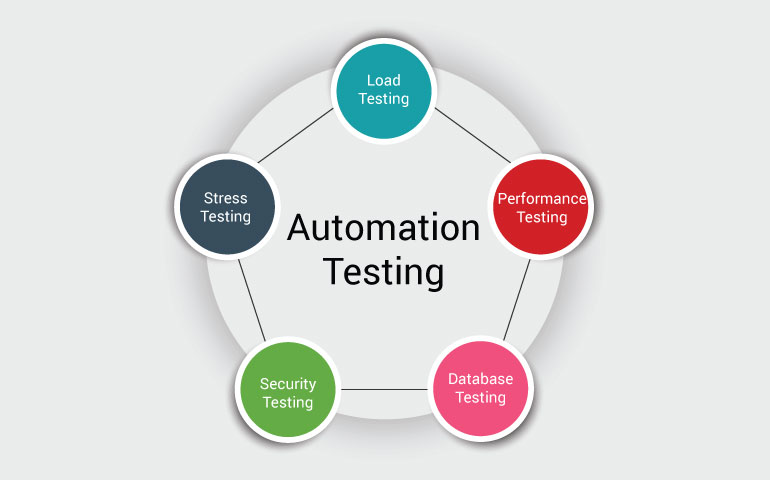Picking the Right Devices for Effective Automation Testing Solutions
Picking the Right Devices for Effective Automation Testing Solutions
Blog Article
Ensuring Success in Automation Evaluating: Trick Metrics, Obstacles, and Solutions Every QA Team Ought To Know
In the realm of software quality guarantee, the landscape of automation testing is ever-evolving, demanding a thorough technique to make sure seamless operations. Key metrics act as the compass directing QA groups through the substantial terrain of test automation, dropping light on development and locations for enhancement. Nevertheless, obstacles loom huge, frequently casting shadows on the course to success. By comprehending these obstacles and implementing efficient remedies, QA teams can navigate via complexities with skill. The trip to mastering automation testing is led with nuances that need an eager eye for monitoring, analysis, and constant renovation. automation testing. As the industry drives onward, the quest for ideal efficiency in automation testing continues to be a continuous pursuit, urging QA teams to furnish themselves with the expertise and strategies vital for victory.
Value of Key Metrics
Comprehending the value of essential metrics is necessary for reviewing the performance and effectiveness of automation screening processes. Trick metrics work as measurable measures that offer beneficial insights into different aspects of the screening process, such as examination protection, test execution time, defect density, and examination situation performance. By evaluating these metrics, QA teams can determine traffic jams, inefficiencies, and locations for improvement within their automation testing structure.
One important facet of essential metrics is their capacity to track progress and monitor the overall health and wellness of the screening procedure (automation testing). They make it possible for stakeholders to make enlightened choices based upon data-driven understandings, which can result in much more efficient screening strategies and far better source allotment. Additionally, vital metrics can assist groups established reasonable objectives, gauge the success of automation campaigns, and show the ROI of automation testing efforts

Usual Difficulties Dealt With
Obstacles frequently come across in automation testing processes can dramatically impact the total effectiveness and performance of QA groups. Among the significant challenges is the selection of the ideal examination cases for automation. Not all test instances are appropriate for automation, and choosing the wrong ones can lead to lost time and resources. Additionally, preserving examination manuscripts can be a complicated job, specifically as the application goes through frequent changes. Examination script upkeep needs continual updates and adjustments to guarantee they show the present performance precisely. Another common difficulty is the preliminary investment needed for establishing automation structures and tools. This can be a barrier for some companies, especially smaller sized ones with limited budget plans. Automation screening might not cover all aspects of screening, such as use and user experience screening, which still require hands-on treatment. Conquering these obstacles requires proper planning, critical test situation choice, durable maintenance processes, ample resources, and a clear understanding of the restrictions of automation screening.
Efficient Solutions for Obstacles
To attend to the obstacles come across in automation screening, implementing efficient options is crucial for boosting the efficiency and performance of QA groups. One vital remedy is to buy durable training programs for QA groups to ensure they have the required skills to properly make use of automation devices. Training can connect knowledge gaps, improve understanding of automation structures, and boost scripting capacities, eventually causing much more efficient examination development and execution.
An additional essential option is to develop clear communication networks within the QA group and with various other stakeholders, such as programmers and job managers. Reliable communication aids in lining up assumptions, sharing development updates, and promptly attending to issues or barricades that may emerge during the automation screening procedure.

Surveillance and Evaluation Methods
Executing effective surveillance and evaluation methods is important for making sure the success and effectiveness of automation testing processes. By making use of surveillance devices, QA groups can track the performance of test scripts, determine bottlenecks, and pinpoint areas for renovation. Real-time tracking permits fast discovery of concerns, enabling rapid reaction and resolution. Furthermore, examining test results and metrics provides valuable insights right into the high quality of the software program being examined and the effectiveness of the testing technique.
One key strategy in tracking and evaluation is making use of dashboards that combine relevant metrics and KPIs in an aesthetically available layout. These dashboards offer a comprehensive introduction of test implementation status, examination coverage, problem patterns, and various other critical details. On a regular basis examining and examining these dashboards can assist QA teams make notified choices, prioritize jobs, and optimize testing initiatives.
Furthermore, applying automated notifies and alerts based upon predefined thresholds can boost positive tracking and timely intervention. By establishing notifies for performance discrepancies or test failures, teams can deal with problems immediately and avoid them from intensifying. On the whole, surveillance and evaluation techniques play an important function in making sure the effectiveness and success of automation testing initiatives.
Continuous Renovation Methods
Enhancing the effectiveness of automation testing processes necessitates the consistent refinement great site of strategies and techniques. One vital approach to improving automation testing processes is to carry out routine reviews and retrospectives.

Final Thought
Finally, it is vital for QA teams to understand the vital metrics, Learn More obstacles, and services in automation testing to make certain success. By meticulously checking and analyzing information, executing effective options to common obstacles, and constantly boosting methods, QA teams can optimize their testing processes and provide top quality software. Sticking to these methods will inevitably result in more efficient and reliable automation screening practices.
By examining these metrics, QA teams can determine traffic jams, inefficiencies, and areas for renovation within their automation screening framework.
Furthermore, vital metrics can help teams established realistic goals, determine the success of automation initiatives, and demonstrate the ROI of automation screening efforts.
Difficulties commonly experienced in automation screening processes can dramatically impact the general performance and efficiency of QA groups. Automation testing might not cover all aspects of testing, such as functionality and individual experience screening, which still call for hand-operated intervention.In conclusion, it is important for QA groups to comprehend click over here the vital metrics, obstacles, and solutions in automation testing to ensure success.
Report this page